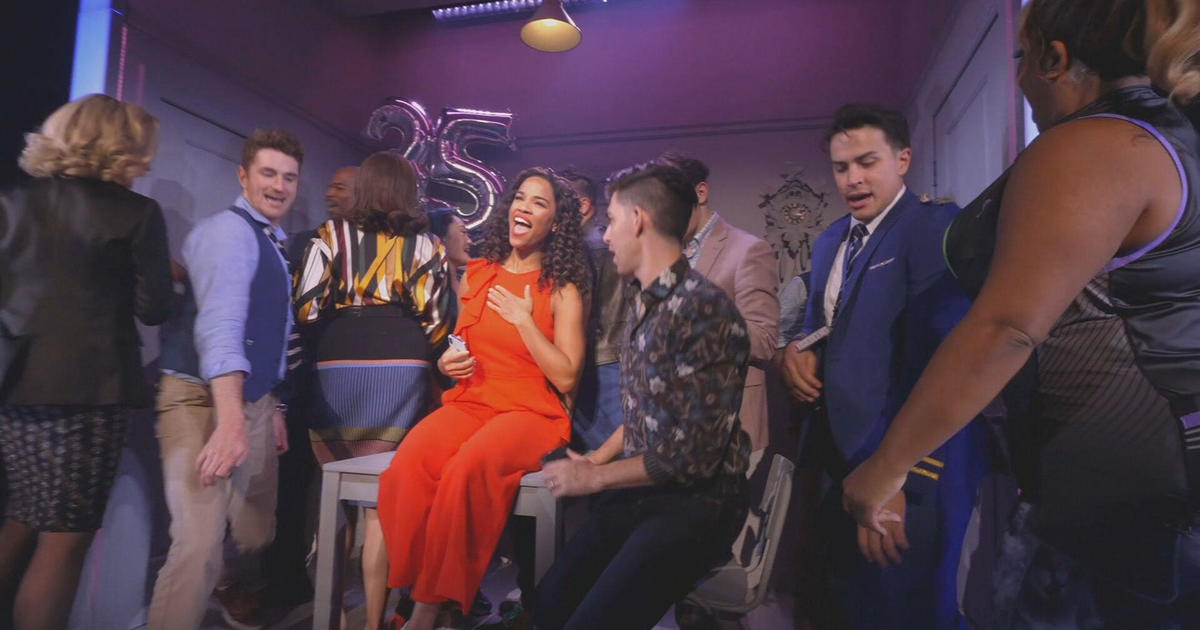Heritage Pass Offers Discounted Tour Of Silverton's Mining History
SILVERTON, Colo. (CBS4) - The residents of Silverton want tourists to stick around by offering the Silverton Heritage Pass. It's a discounted admission to three places that tell the story of mining in Silverton.
The first stop is where tourists learn how the ore was removed from the ground at the Old Hundred Gold Mine tour.
"This claim, the Old Hundred, was filed here way back in the 1870s by a German immigrant," miner and tour guide Ernie Kuhlman said. "Mining is what settled the West. Most all the gold ever found in the Silverton area was found within white quartz.
"People came out here with the anticipation of finding gold. They could come out here and stake a mining claim."
Kuhlman said he was born and raised in mining in Cripple Creek. He said the miners would work 10-hour days 6 days a week drilling holes in rock by hand to put dynamite in to break up the rock.
"Most of the equipment in underground hard rock mining now is pneumatic -- ran by air."
Kuhlman explains to tourists how the dynamite was applied to the rock and how much of it was used to break the rock. He also explains many other types of equipment that was and still is used in mining.
"It's dangerous work, it's too easy to get killed, and they didn't seem to care if you got killed or not, they just wanted the silver and gold out of here," a tourist said.
"Life expectancy for miners at that time was 40. It was a rough business, it was a rough life, especially in the San Juans," Kuhlman said.
Get price and schedule information about the Old Hundred Gold Mine tour by calling (800) 872-3009, or log on to their website at minetour.com.
After learning about taking all of that ore out of the ground, the next stop is the Mayflower Gold Mill. That's where they separated all the valuable metals from the rock.
The Durango and Silverton Railroad carries passengers through the heart of the San Juan Mountains with some of the most spectacular scenery anywhere in the state. The railroad was built to carry the rich ore out of the rugged mountains around Silverton. The ore would make its way to the Mayflower Gold Mill.
Hanging like a string of pearls across Arrastra Gulch, tram buckets, ancestors of modern ski lifts, would also carry gold ore from the mines above Silverton to be crushed and processed at the Mayflower Gold Mill.
Finishing touches are being made to renovations of the historic site that was closed to public tours during the summer of 2010.
"The noise and sounds in here were deafening," Scott Fetchenhier with the San Juan County Historic Society said.
Fetchenhier begins the tour at the tram house where precious hard rock arrived by the bucket-load from the 1920s until the 1960s.
"Once they've unlocked it off that moving cable, then they would just take it and move it along that rail. They would actually push it by hand and it would go around the corner here and dump into a hopper; and that's where the start of the crushing circuit would start," Fetchenhier said.
The crushing circuit is the industrial journey to squeeze valuable metal from hard rock. The journey continued with ore from the Sunnyside Mine all the way until 1991.
"The cone crusher, it's just like a big mortar and pestle just going around. It's just smashing it into a certain consistency," Fetchenhier said.
The circuit continues on conveyors belts, feeding one giant machine after another.
"Those big steel rods that are right there would be fed into this rod mill … as these rods are tumbling against each other they're also crushing all the rock into a fine sand. It just pounds and pounds and pounds this rock into a fine sand."
That fine sand would go in two directions. The first in the floatation cell room.
"This thing here is just rotating at a high speed ... just making a huge amount of air bubbles that come up amazingly by adding these chemicals; things like lead, zinc and copper will actually float on top of the bubbles."
The process allowed the mining company to extract added value from the rocks.
"This is called a Dykstra table. It's just a vibrating table that's just shaking like this. Gold likes to separate out by gravity, so you get a line of gold coming."
The gold is separated out of what's left of the crushed rock by adding mercury.
"So you put it in this furnace. It would actually burn the mercury off and re-collect it to keep the mercury ... and you're left with what is called a gold sponge which would have many, many ounces of gold in it.
"Probably one the things that amazes me the most is how much work went into drilling, blasting, transportation and milling to get a quarter ounce of gold … out of just one ton of rock. All of this work, all of this expense to get this little teeny bit of metal out."
Find out about tours of the Mayflower Gold Mill by going to the San Juan County Historical Society website at SilvertonHistoricSociety.org. Or call the museum at (970) 387-5838.
The last stop with the Silverton Heritage Pass is the Mining Heritage Center at the San Juan County Museum.
Bev Rich with the San Juan County Historic Society describes herself as the daughter and the wife of miners.
"It's not that romantic, it was a lot of work," Rich said.
Her roots run deep in Silverton.
"Since the last mine shut down in San Juan County in 1991 we decided we need to save our heritage now while we can," Rich said.
After taking the mine and mill tours, visitors at the museum get the big picture.
"Well, this was the Silicon Valley of its time. This is where so much technology was developed in a relatively short period of time.
"Nobody would have been silly enough to build a town at 9,318 feet with the extreme conditions that we have unless it would have been for the allure of gold and silver.
"Silverton is about minerals. We're one of the most famous areas in the entire world as far as geology goes. Rock hounds flock here from all over the world just to look at our rocks."
Rich said they had people of every nation of the world in Silverton.
"So it's a really rich history."
To find out more about the Heritage Pass, call the San Juan County Historical Society's Museum for more information at (970) 387-5838, or log on to SilvertonHistoricSociety.org.
Get to Silverton by taking U.S. Highway 550 south from the city of Montrose. Go through Ouray and up the Million Dollar Highway over to Silverton. Signs will point to the Mayflower Gold Mill a couple of miles east of town. The Old Hundred Mine is just a few miles past that.



